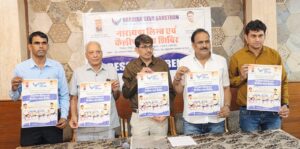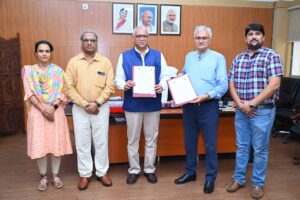
Butterflies, with their delicate wings and vibrant colors, have a magical ability to transport us back to childhood, where we chased them through sunlit gardens. Their fluttering presence enchants us, stirring memories of carefree days spent in nature’s embrace. However, these little fairies are becoming rarer, victims of urbanization and environmental change. As we yearn for peaceful moments away from the city’s hustle and bustle, surrounded by the beauty of nature, the absence of colorful butterflies feels like a loss. Their dwindling numbers remind us of the fragility of nature, calling for us to protect these symbols of innocence and beauty.
If you’re longing to relive the carefree days of childhood and immerse yourself in the beauty of nature, Kaziranga National Park in Assam is a perfect destination. While the park is renowned for its majestic one-horned rhinoceros, it is also a paradise for nature lovers, teeming with vibrant life especially butterflies. The park’s lush green forests provide a tranquil haven, not only for large wildlife but also for delicate, colorful butterflies. Spend your time marveling at the beauty of these creatures as they flit among the trees, reconnecting with nature in one of its most enchanting forms.
Kaziranga National Park in Assam has become home to over 446 species of butterflies, placing it second in India for butterfly diversity. The park’s rich variety of butterfly species is only surpassed by Namdapha National Park in Arunachal Pradesh, which holds the top spot.
This achievement is the result of years of dedicated work by Monsoon Jyoti Gogoi, a young scientist and native of the Kaziranga region. His efforts in documenting and studying the butterflies of the area have culminated in long-term observations and records that highlight Kaziranga’s unique biodiversity.
Assam’s Chief Minister, Himanta Biswa Sarma, took to social media to congratulate Gogoi for his significant contributions. He specifically commended Gogoi for identifying 18 new species of butterflies in India, including the Burmese Threering, Glassy Cerulean, and Dark-bordered species, adding to the nation’s rich natural heritage.
Monsoon Jyoti Gogoi has been conducting butterfly research in the region since 2007. Speaking about his findings, he noted that Kaziranga National Park now ranks second among all protected areas in India in terms of butterfly species diversity. He highlighted the significance of this accomplishment, especially given Kaziranga’s geographical location. Unlike other biodiversity hotspots situated within the Himalayan and Patkai mountain ranges, Kaziranga’s unique location makes its high species diversity even more remarkable.
The park authorities echoed these sentiments, stating that Kaziranga’s impressive array of butterfly species underscores the importance of its conservation efforts and the park’s role in preserving India’s natural wonders.







